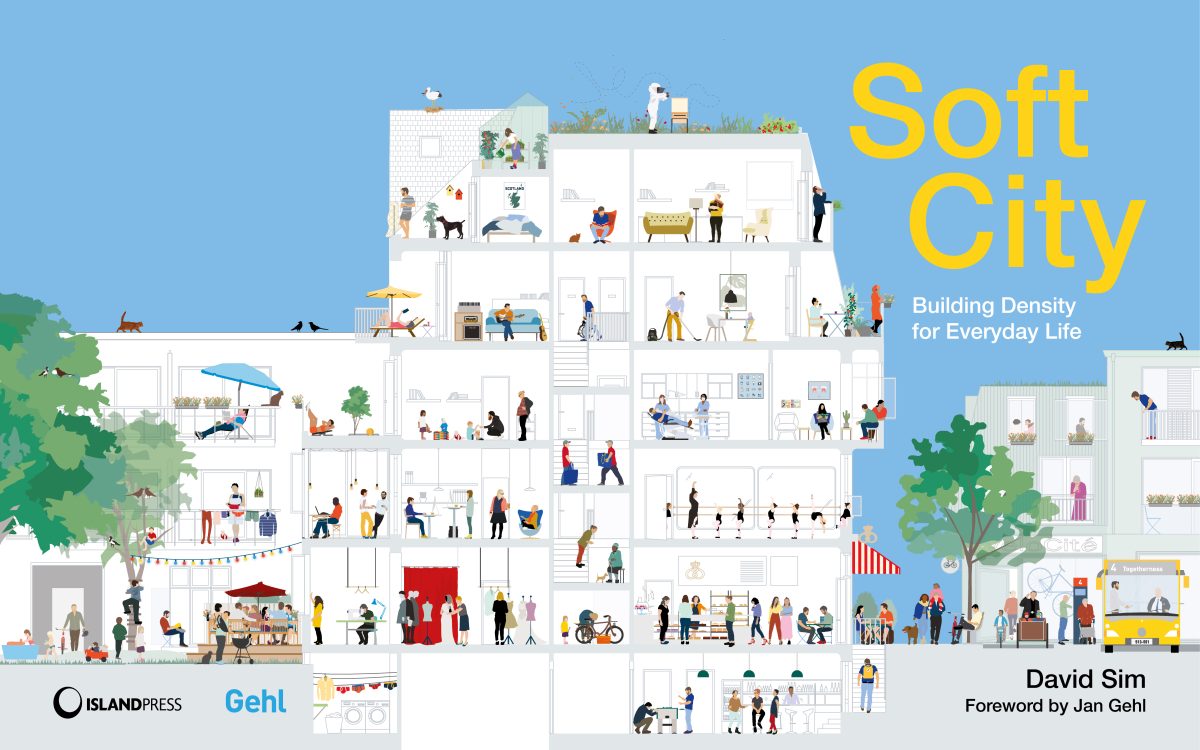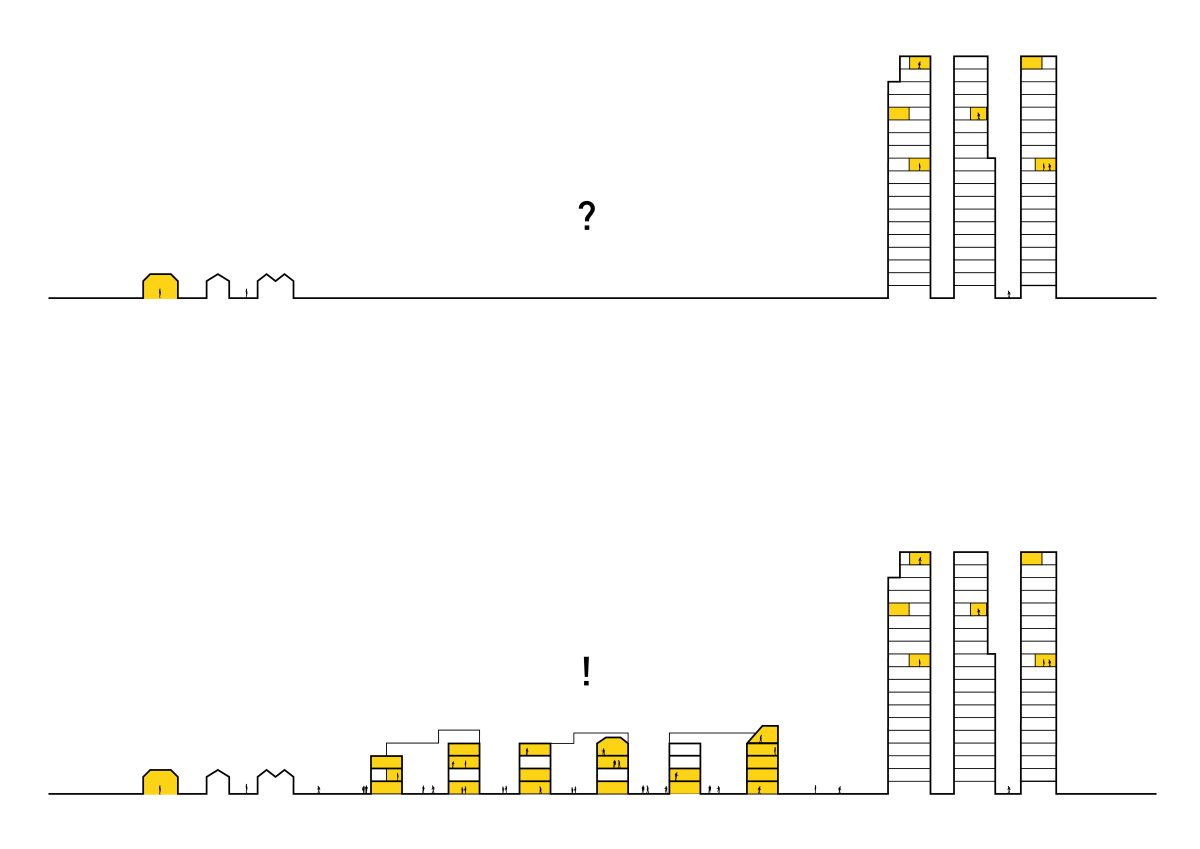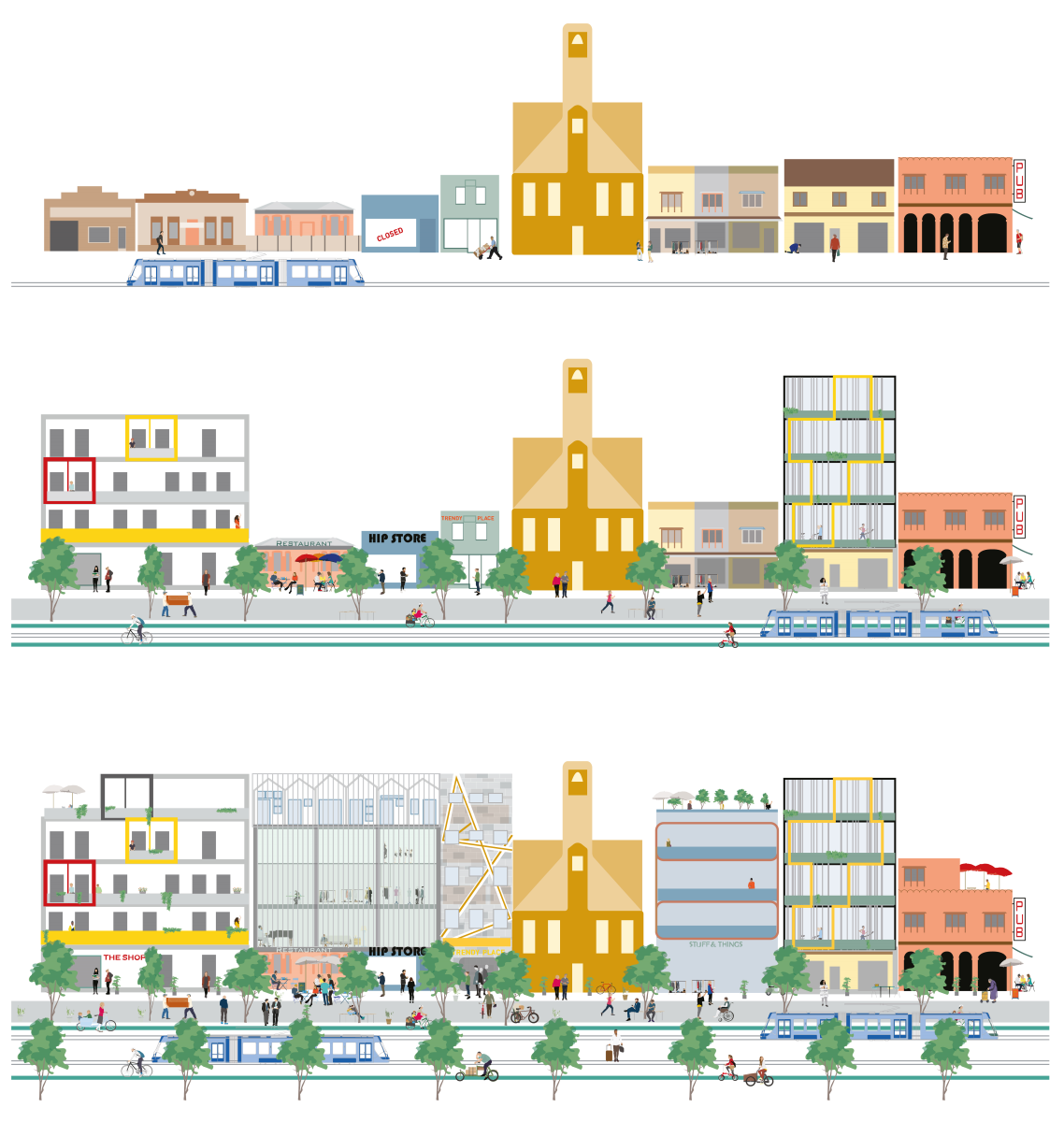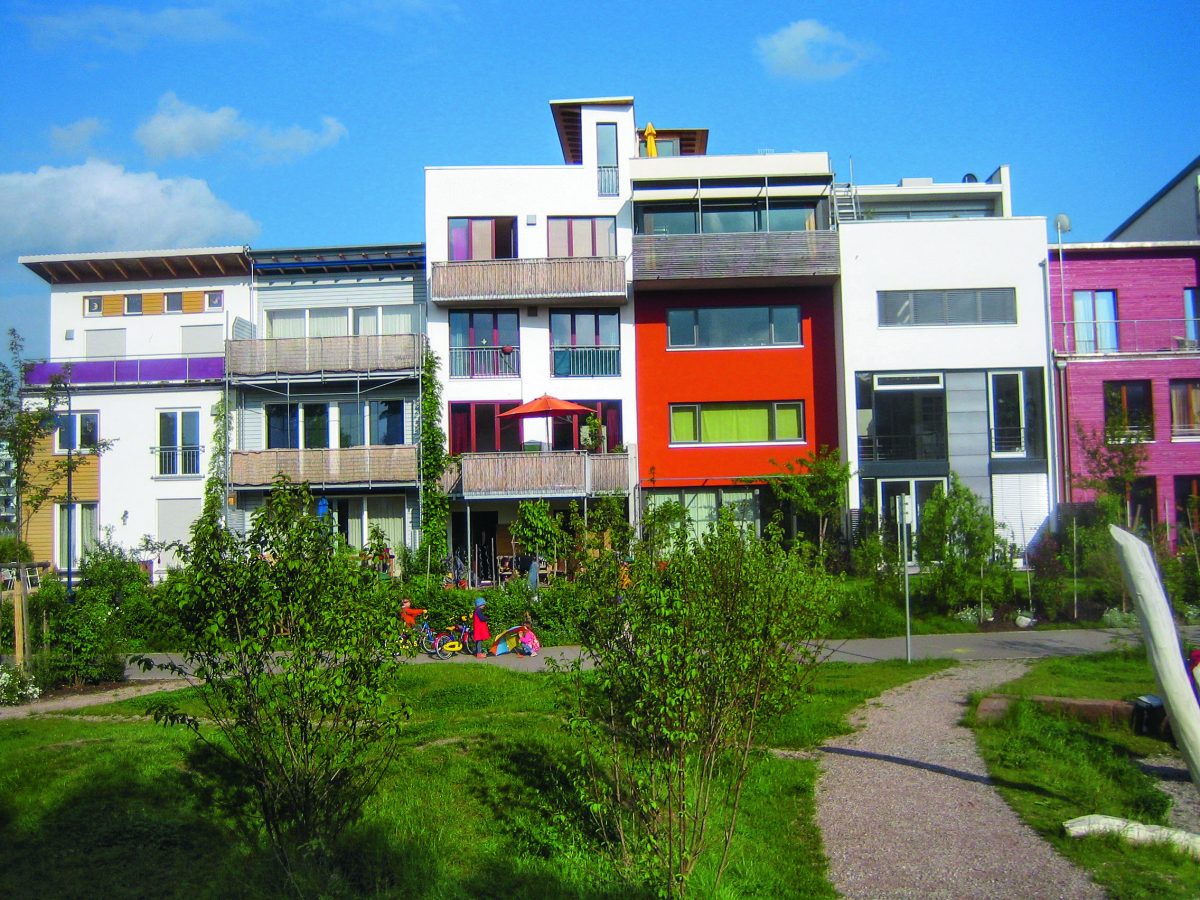
Soft City: Building Density for Everyday Life
Book Review by Max Hampton, Design Advisor at the Design Commission for Wales
The Placemaking Charter promotes places with a mix of uses and population density to support their social and economic life. Medium-density and mixed-use buildings are characteristic of traditional European towns and cities. Yet, this fine-grain, medium-rise building form, described as the 'missing middle,' is unusual in new development in the UK. David Sim, a Scottish architect based in Scandinavia, shows in Soft City how to design densely built environments at a human scale.

The Missing Middle (Sim/Island Press)
Soft City’s premise is that increasing the density of our towns and cities can help address the global challenges of climate change, congestion, and urbanisation. Increasing development density has a bad reputation in the UK and is associated with high-rise towers, small flats, and overcrowding. Sim acknowledges that greater density alone is not the answer, but when you add a diversity of building types and uses in the same place, you create the true urban quality of European towns and cities.

Aarhus, Denmark (Sim/Island Press)
The thesis of Soft City is Density x Diversity = Proximity. The idea is that the fusion of density and diversity increases the possibility of useful things, places, and people being closer to you. The book shows how potentially conflicting aspects of everyday existence can be brought together and connected to deliver better quality of life.
Soft City illustrates how the traditional urban building pattern of enclosed blocks, with independent, joined-up, and layered buildings, can accommodate density and diversity of uses while maintaining the human scale. Sim shows why this urban form, with its simple rules, has helped create some of the world’s most liveable towns and cities. Medium-rise blocks can combine the comfort and security of suburban living with the convenience and accessibility of urban life.

The Enclosed Block (Sim/Island Press)
The book includes examples from Scandinavia, the rest of Europe, Japan, the United States and Australia. I was interested to read how Melbourne uses clear and simple rules to enable denser, mixed-use development along and around existing public transport. This policy allows the city to accommodate population growth without expanding outwards and evolving over time, with densification taking place plot by plot.

Melbourne – Increasing density around existing infrastructure (Sim/Island Press)
There are good examples from Germany and Sweden of larger sites masterplanned by the local authority and subdivided into small plots. Different developers, with various architects, develop each plot. The result is a diverse mix of housing types and land uses in lively neighbourhoods with a strong sense of identity and community.

Vauban, Freiburg (Sim/Island Press)
Sim is not trying to ‘Scandify’ the world and recognises different countries have different people and cultures, climates and landscapes, politics and planning systems. However, he identifies we are all facing similar challenges that the urban design principles in this book can help solve.
I recommend Soft City to anyone interested in how dense and mixed-use developments can create sustainable and resilient communities with healthier and happier people. This beautifully illustrated book is full of ideas and examples that can support placemaking in Wales.

